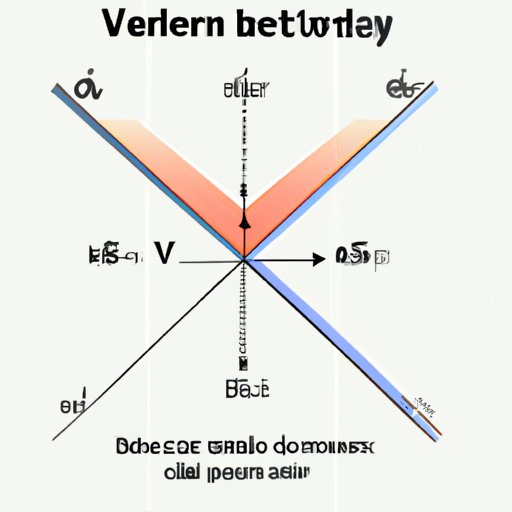
Understanding Vertex Form: Everything You Need to Know
Quadratic equations are an essential part of high school mathematics. They are used to model various real-life problems and are crucial in subjects like physics, economics, and engineering. One important aspect of quadratic equations is vertex form. In this article, we’ll explain everything you need to know about vertex form, including how to identify it, how to use it, and its real-life applications.
Explaining Vertex Form for Beginners: A Step-by-Step Guide
Vertex form is a way of writing quadratic equations that makes it easy to identify the vertex of the parabola it represents. The vertex is the highest or lowest point of the parabola, and it lies at the intersection of the axis of symmetry of the parabola. In vertex form, the equation can be written as:
y = a(x – h)^2 + k where (h, k) is the vertex of the parabola and a is a non-zero constant.
To identify a quadratic equation in vertex form, look for the squared term first. If the quadratic is in vertex form, you’ll notice a squared term (x – h)^2 where h is some constant.
Converting a quadratic equation from standard form to vertex form is also simple. Use the process of completing the square to change the expression. After completing the square, you can find h and k in the vertex form equation. Finally, practice graphing quadratic equations using vertex form by finding the vertex, axis of symmetry, and important points of the parabola.
Mastering the Vertex Form Equation: Tips and Tricks
Once you understand the basic vertex form equation, you can start fine-tuning and simplifying the equation to make it easier to use. One method is to perform the square in the vertex form to simplify the equation. Another tip for mastering vertex form is to be aware of common mistakes, such as forgetting to multiply terms or making arithmetic errors.
Practicing with sample problems will help you avoid making mistakes and become more comfortable using vertex form.
Understanding the Significance of Vertex Form in Quadratic Equations
Quadratic equations in standard form can be challenging to work with. However, by converting them to vertex form, you can quickly determine crucial features of the equation, such as the vertex, axis of symmetry, and y-intercept. This information is useful for finding the minimum or maximum value of the equation, the range of the function, and the x-intercepts.
Understanding vertex form is essential in solving real-life problems that can be modeled by quadratic functions. Vertex form can help us determine various features of the equation, including its maximum and minimum values, locations where it crosses the x-axis, and other important points.
How to Convert Standard Form to Vertex Form with Ease
Converting quadratic equations from standard to vertex form is a critical skill that will come in handy when working with quadratic equations. The conversion process involves completing the square. It helps to memorize the steps involved in completing the square and knowing the different forms of the quadratic equation.
You can also practice converting standard form equations to vertex form to gain confidence and build your skills. By practicing, you will learn the pattern of the vertex form equation and also become confident about the accuracy of your calculations.
Finding the Vertex and Axis of Symmetry Using Vertex Form
Vertex form makes it easy to find the vertex and axis of symmetry of a quadratic equation. The vertex lies at the point (h, k) when the equation is in vertex form. The axis of symmetry is the line that passes through the vertex and divides the parabola into two equal halves.
By identifying the vertex and axis of symmetry of a quadratic equation, you can quickly sketch its graph without having to plot many points. You can find these points by using the vertex form equation and plugging in values for x.
Real Life Applications of Vertex Form in Mathematics
Vertex form finds use in many fields of mathematics, including engineering, physics, and economics. In physics, the equation can be used to model the trajectory of a projectile, including calculating its maximum height and the distance it will travel. In economics, vertex form is used to analyze revenue and profit functions. Vertex form can also help us model population growth and the spread of diseases.
Conclusion
Vertex form is vital in the study of quadratic equations. Understanding the equation can make it easier to graph parabolas, identify their features like the vertex and axis of symmetry, and solve real-life problems. Whether you’re studying for an exam or trying to understand the real-life applications of vertex form, this article has given you a guide to mastering vertex form. Remember to practice, develop your skills, and always strive to be better than before.
